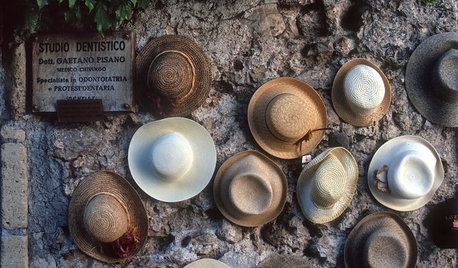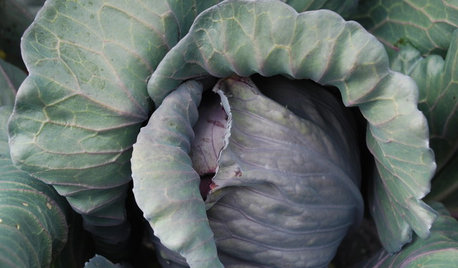Natural range
garyfla_gw
16 years ago
Related Stories

KITCHEN DESIGNWood Range Hoods Naturally Fit Kitchen Style
Bring warmth and beauty into the heart of your home with a range hood crafted from nature's bounty
Full Story
COLORNature’s Color Wisdom: Lessons on Earth Tones From the Great Outdoors
Look to the land for hues that are grounding, soothing and endlessly versatile
Full Story
COLORNature’s Color Wisdom: Lessons on Blue From the Great Outdoors
Take some cues from the sea and sky to find a blue to match any taste and mood
Full Story
DECORATING GUIDESNature’s Color Wisdom: Lessons on Green From the Great Outdoors
Green will grow on you for interiors when you look outside for ideas on how to use it
Full Story
DECORATING GUIDESNature’s Color Wisdom: Lessons on Pink From the Great Outdoors
Leave your assumptions about pink at the princess playhouse door. Head outside instead for shades from shocking to subtle
Full Story
REMODELING GUIDES8 Natural Home Materials That Can't Be Beat
See how designing with natural stone, clay, wood and more can give a house luminosity, depth of color and lasting appeal
Full Story
RUGS6 Great Places for a Natural Fiber Rug
One rug fits all: See where and why you can use this foot-friendly, understated accent
Full Story
ACCESSORIESFound Objects: The Most Natural Decor of All
They're beautiful, plentiful and best of all, free. See how to turn surprise finds into uniquely personal displays
Full Story
CONTAINER GARDENSBeat the Frost With Natural Terra-Cotta Containers
Here's how to protect your pots during the cold winter months
Full Story






mutant_hybrid
garyfla_gwOriginal Author
Related Professionals
Erie Landscape Architects & Landscape Designers · Manhattan Beach Landscape Architects & Landscape Designers · Forest City Landscape Architects & Landscape Designers · Tempe Landscape Contractors · Framingham Landscape Contractors · Indianapolis Landscape Contractors · North Canton Landscape Contractors · North Chicago Landscape Contractors · Oak Forest Landscape Contractors · St. Louis Landscape Contractors · Welby Landscape Contractors · Westchester Landscape Contractors · Hawaiian Gardens Landscape Contractors · Shafter Landscape Contractors · Glenvar Heights Swimming Pool Buildersmutant_hybrid
garyfla_gwOriginal Author
mutant_hybrid
garyfla_gwOriginal Author